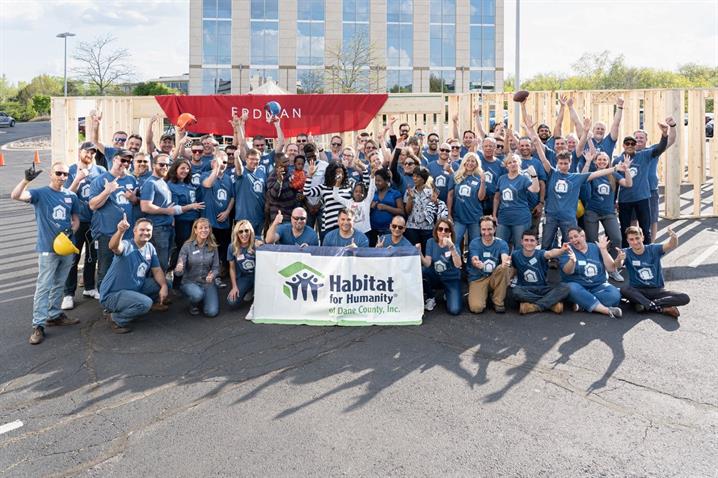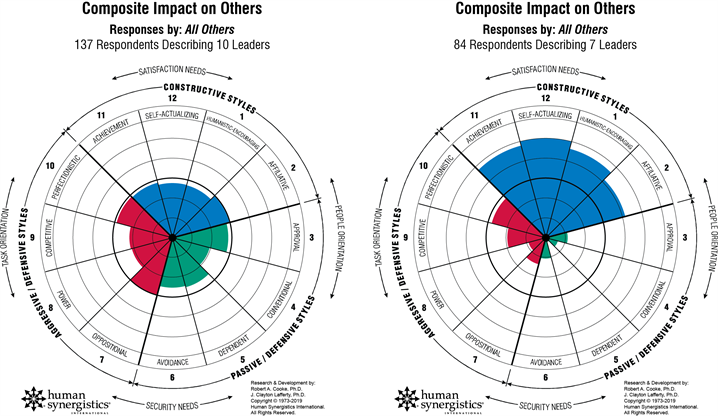How to Create a Leadership Culture that Really Achieves Company Vision

The Extraordinary Trainer System- September 2019

Back to the Future of Feedback

How to Create a Leadership Culture that Really Achieves Company Vision
If your actions inspire others to dream more, learn more, do more and become more, you are a leader.
– John Quincy Adams
Leading is not dependent on title or placement on an organizational chart. Nor is it confined to office walls. ERDMAN’s Integrative Thinking. Healthier Communities.™ occurs when our technical experts realize the importance of developing our leadership excellence is even more vital. ERDMAN’s culture journey has focused on developing a culture of leadership in which people at any level can grow into leaders, support each other’s development, achieve goals, and fulfill shared purpose.
As we embarked on our change journey at ERDMAN, we kept the roles of culture and leadership closely intertwined, starting with our strategic plan. With this post, we are pleased to share some of the things we’re learning about leadership at all organization levels and how it has been essential to the progress of our culture journey.
Begin with clarity and intention
We started our journey by ensuring that we had a clear and intentional leadership philosophy and that leaders understood the importance of creating a Constructive culture to achieving our mission. That meant clearly defining what leadership looks like; utilizing a common, Constructive language; and identifying effective leadership behaviors to start a dialogue rooted in a growth mindset. While it was and still can be challenging, we learned through our experience that our most senior leaders needed to be keenly self-aware of leadership growth opportunities before embarking on this work.
Assess at the top
We took our first Leadership/Impact® (L/I)i assessment in 2016 with 10 senior leaders. A composite profile helped us to understand what leadership strategies we were embodying and the impact they were having. Our profile reflected some strengths we wanted to grow in the Constructive styles; we also realized we had a culture of blame, with extensions in the Defensive styles of Oppositional and Avoidance. The impact we were having on others had room to be more effective.
In addition to the L/I results, we had data from pre-employment assessments, round-robin feedback from various meetings, and employee engagement and satisfaction survey data. We had a whole lot of data (“words”) and a desire for a whole lot more results (“behaviors”). It’s cliché, but so true: We needed to walk the talk. And so, we did.
It’s cliché, but so true: We needed to walk the talk. And so, we did.
Invite leadership for active involvement
To enhance our impact, we invited senior leaders to the future with crystal-clear expectations for what leading in a Constructive culture looks like. We previously didn’t clearly know what “effective” or “less effective” looked like and we had a variety of interpretations. For ERDMAN, it involved defining what our values and related behaviors were, especially around leadership at the appropriate competency level by role.
After defining what leadership looks and feels like at ERDMAN, we measured ourselves against it in monthly 1:1 meetings, senior leadership team meetings, and annual performance reviews. We talked about why this was important from a role-modeling and envisioning perspective. Whether we were in a senior leadership team meeting or in our check-ins with each other, we started to set behavioral standards to which we agreed to adhere and cascade to the group of leaders we had the responsibility for developing. The only way for us to be credible leaders was by taking the time and modeling and setting the priority for leadership development with our people.
We agreed to build leadership development plans for ourselves with feedback from each other, led from a position of vulnerability and opennessii by our CEO. And then, we agreed to report out on progress and ask for help at every senior leadership team meeting, which was approximately every 4-6 weeks. The change was gradual, but real. The “soft” stuff is now welcomed in our meetings knowing that leadership affects change, and we would argue that it’s the only thing that can. We are strong as a team of leaders committed to developing each other, employees, and future leaders.
Encourage open discussion, early and often
Our journey hasn’t been without challenges, including some that were painful. Some leaders chose not to, or were unable to, make the commitment to the journey. In hindsight, we should have been swifter about identifying any misalignment. We didn’t quite know what we didn’t know, which was the regular presence of Aggressive/Defensive and Passive/Defensive styles being mistaken for leadership. It was limiting everyone’s growth, as well as that of the overall company. We are still learning and problem-solving real business and leadership challenges together as they surface. We set aside time for leadership development and problem solving both individually and as valued and respected team members.
Get serious and intentional about looking at your organization as a system or team of wonderful human beings who want to be a part of something bigger and of great importance. Nurture that team and they will help you move mountains.

Reassessment is essential for growth
In spring 2019, we formally assessed our progress by using Leadership/Impact with seven leaders, four of whom joined the team in the last two years. We were proud and excited to see the shift to the Constructive styles. While we have work to do individually and as a team, the beauty is that we can identify challenges quickly in ourselves and others and strive to improve. We can give constructive feedback to help each other grow while understanding that development is the goal — and not an attempt for control or power.

Get serious about culture and be open to learning
I encourage other organizations to measure culture — really measure culture, not just do a fly-by with an employee engagement survey. Get serious and intentional about looking at your organization as a system or team of wonderful human beings who want to be a part of something bigger and of greater importance. Nurture that team and they will help you move mountains.
The Culture Roadmap (included in Human Synergistics’ complimentary Culture Toolkit) and Causal Factors (from the How Culture Works model) were essential tools in helping us establish tactical plans to support a strategic plan focused on leadership and culture. We looked at everything and understood that significant changes were necessary in order to advance our progress as an established organization. We soon learned that it wasn’t so much about an advancement as it was a transformation of all our systems and supporting infrastructure.
In closing
Our work on culture is three years in the making, and we can confirm improvement in our Organizational Culture Inventory® (OCI®) scores. Our financial results are also on the rise — most notably with pipeline growth, revenue, and earnings. While we are just beginning our journey of growth and improvement, our team has worked hard and is starting to “feel” and “hear” the difference a Constructive culture can bring to individual, team, and overall company effectiveness.
We have learned life-changing lessons about leadership and look forward to continuing to grow and starting to develop our next level of leaders. Our healthcare and senior living design solutions make a difference in the lives of patients, residents, communities, and families. We are realizing ERDMAN’s vision by and through the nurturing of our culture: a unified family celebrating diversity, creativity, and love of people with a shared purpose to improve lives.
References
i Cooke, R. A. (1996). Leadership/Impact® (L/I). Plymouth, MI: Human Synergistics International.
ii Brown, Brené. (2012). Daring Greatly: How the courage to be vulnerable transforms the way we live, love, parent, and lead. New York: Penguin Random House.
Read more
Author:Andrea Hopkins
Source: Human Synergistics



